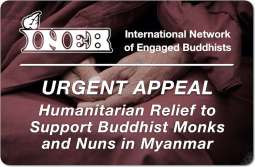paramārtha [paramattha] paramārtha satya [paramattha sacca] the highest truth, paramārtha deśanā [paramattha desanā] the highest teaching, paramārtha vacana [paramattha vacana] the highest speech. Paramārtha satya is the highest truth, which is different from the conventional truth (vyavahāra satya) [vohāra sacca] or samvṛti satya [sammuti sacca].
The Abhidhamma Piṭaka contains the ultimate truth, teaching and speech whereas the Sutta Piṭaka contains the conventional truth, teaching and speech. Beyond mind and matter there is no permanent entity such as self. This is the ultimate truth. The conventional teaching comprises ethics, morality, whereas the ultimate teaching speaks of the existence as physical and mental phenomena, subject to change. When the Buddha speaks about such entities such as living-beings, men, women, animals, etc. he is uttering vyavahāra [vohāra] vacana which is the conventional mode of speech. Reference to rebirth comes under conventional speech. The utterances of the Buddha have, besides direct meaning, an implicit meaning and hence ultimately they speak of impermanence of the phenomena, devoid of a self. The Mādhyamika school has elaborated on the paramārtha.
勝義
Paramārtha (499-569)
Also known by his Chinese name, Chen-ti, he was an Indian scholar- monk from the Avanti region of western India. He arrived in China by sea in 546 ce and took up residence in Chien-K'ang at the invitation of the Emperor Wu of Liang in the south of China. His prolific translation work has led to his being counted among the ‘four great translators’ in Chinese Buddhism. Among the 64 works translated by him are a number of key Buddhist texts, especially Yogācāra, works which include the Abhidharma-kośa, the Suvarṇa-prabhāsottama Sūtra, the Mahāyāna-saṃgraha, and the Madhyānta-vibhāga-kārikā. A translation of the Awakening of Faith in the Mahāyāna ( Mahāyāna-śraddhotpāda Śāstra) is also attributed to him but some scholars doubt the authenticity of this text. The Chinese She-lun school was derived from his translation of the Mahāyāna-saṃgraha. His translations of Yogācāra works are often characterized by the inclusion of editorial comments interwoven with the original text that present his understanding of Yogācāra doctrines, though it is not certain whether this derives from the western Valabhī school of Yogācāra or was unique to himself. It was concern with these innovations that partly prompted Hsüan-tsang to travel to India to ascertain and later reject the validity of Paramārtha's rendering of Yogācāra.
paramārtha: Highest sense; an absolute real.
don dam
[translation-san] {MSA,MV} paramārtha
[translation-san] {MV} paramārthatā
[translation-eng] {Hopkins} ultimate; ultimate object
[division-bod] dbye ba 1 don don dam/ 2 thob pa don dam/ 3 sgrub pa don dam/
[division-eng] Divisions: (1) objective ultimate [i.e. suchness]; (2) attainment ultimate [i.e. nirvāṇa]; (3) practice ultimate [i.e. exalted wisdom of meditative equipoise]
[comments] See: don dam pa
don dam pa
[translation-san] {C,MV,MSA} paramārtha
[translation-san] {MV} paramārthatā
[translation-eng] {Hopkins} ultimate; ultimate object
[division-bod] dbye ba 1 don don dam/ 2 thob pa don dam/ 3 sgrub pa don dam/
[division-eng] Divisions: (1) objective ultimate [i.e. suchness]; (2) attainment ultimate [i.e. nirvāṇa]; (3) practice ultimate [i.e. exalted wisdom of meditative equipoise]
[comments] Comment: An equivalent of ultimate truth (don dam bden pa, paramārthasatya) so called because it is the object of the activity of Superiors' exalted wisdom of meditative equipoise; ""highest"" (dam pa, parama) is taken as the exalted wisdom of uncontaminated meditative equipoise, and ""object"" (don, artha) is taken as the thusness, or emptiness, that is the object of that exalted wisdom, whereby thusness is called the truth that is the object of the highest [wisdom] (dam pa'i don, paramasya artha-satya). In another interpretation, that wisdom itself is called the highest object (don dam pa, parama-artha), since it is both highest and object; emptiness is called the truth of the highest object (don dam pa'i bden pa, parama-arthasya satya).













